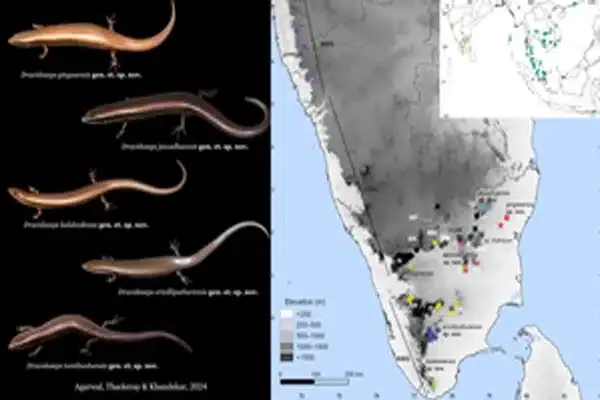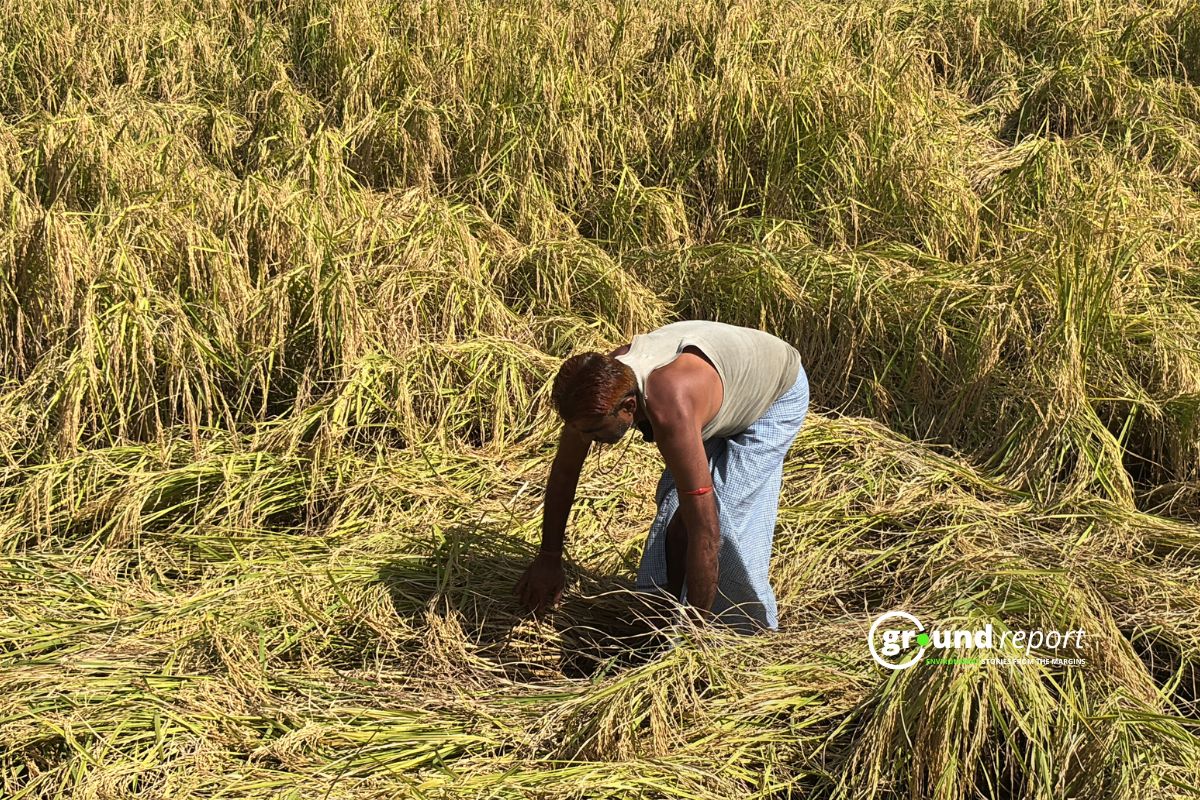In the Srivilliputhur-Megamalai Tiger Reserve in Tamil Nadu, southern India, scientists spotted a pregnant creature navigating through the dry leaves on the forest floor near a waterfall. This scaly creature was identified as a new species.
Researchers conducted a large-scale wildlife search across hundreds of locations in Tamil Nadu from 2018 to 2023, according to a study in Vertebrate Zoology. Their goal was to find and identify a specific type of lizard. During their survey of the tiger reserve, they came across 20 unidentified lizards.
New species of skinks found in Tamil Nadu
Upon closer examination, they realized they had discovered a new species, the SMTR leaf-litter skink, or Dravidoseps srivilliputhurensis. This medium-sized skink, measuring just over four inches, lives in leaf litter. It has a relatively slender body, a small head, and short limbs. A unique feature is a transparent window-like area on their lower eyelids.
The skinks have trapezoidal or quadrangular nostrils and are light bronze-brown in colour with dark stripes on their sides. Some skinks appear wider in the middle, resembling a slender snake.

Researchers found a new species, named SMTR, in the Srivilliputhur-Megamalai Tiger Reserve in Tamil Nadu. The SMTR was found in various habitats such as leaf litter, under rocks, and near waterfalls in low-altitude forests. Interestingly, many of the female skinks were found pregnant with two or three young ones. Unlike most lizards that lay eggs, this new species gives birth to live young, a characteristic known as viviparity.
The new species was named after the reserve where it was discovered. So far, it has only been found in this particular reserve. The species was identified based on its eyelashes, breeding method, scale pattern, and DNA.
89 skink samples collected
The ‘Dravidoseps Gouensis’, a new genus, has been discovered in various locations including Utsum in North Goa, and the districts of Sindhudurg and Kolhapur in Maharashtra. In Kolhapur, it has been spotted in areas like Radhanagari, Pandivare, Talye, and Vashi.
After five years of extensive research and expeditions, the team collected 89 skink samples from 33 locations. Their efforts led to the discovery of a new genus and five new species spread across three states in India.

The scientists conducted a thorough study of these species, examining their anatomical features, gene set, geographical distribution, history, and evolution period. They found that the timing of reptile birth is linked to low-temperature habitats. This suggests that the adaptation of giving birth to live young, as seen in these skinks, could be an evolutionary response to the challenges of egg hatching in low temperatures.
Currently, over 40 species of reptiles are recorded in India. However, this is the first record of a Viviparous Skink in the Indian subcontinent, sparking significant interest in the scientific community. This discovery is particularly noteworthy as only five skink species have been discovered in India in the last 40 years, with just two from peninsular India. The uniqueness of these species highlights the importance of conserving their habitats.
The TWF continues to work towards the research and conservation of often overlooked species like reptiles. To date, they have discovered more than 40 new reptile species.
Keep Reading
Part 1: Cloudburst in Ganderbal’s Padabal village & unfulfilled promises
India braces for intense 2024 monsoon amid recent deadly weather trends
Support us to keep independent environmental journalism alive in India.
Follow Ground Report on X, Instagram and Facebook for environmental and underreported stories from the margins. Give us feedback on our email id greport2018@gmail.com.
Don’t forget to Subscribe to our weekly newsletter, Join our community on WhatsApp, and Follow our YouTube Channel for video stories.









